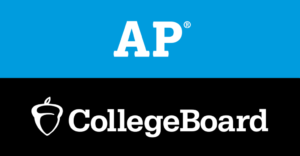From history to computer science, Coronado High School offers a wide variety of Advanced Placement (AP) courses. Enrolling in several AP classes over the span of two to three years can significantly boost a student’s grade point average (GPA) and can be advantageous to being accepted to a college or university of their choice. The vigor and pace of these courses also provide high schoolers with a taste of college life. In a normal school year, the rigor, countless hours studying, and anticipation of testing shaped these classes for those striving to succeed. For students and teachers, however, this school year has redefined the expectations of college courses and provided hurdles never seen before.
Last spring, AP tests were administered fully online. Because students tested from home, durations were shortened depending on the course to minimize the temptation to cheat. For some subjects, the format was slightly altered to accommodate the new environment. For example, AP World History testing only required one Document Based essay question instead of two, and the multiple choice and short answer sections were removed from the exam. The format for AP testing this spring has not been released at this time.
CHS students use the AP CollegeBoard platform to learn and review information.
Ms. Andrea Hughes is the AP Chemistry teacher at CHS. Not only does distance learning present a significant obstacle with the lack of hands-on laboratory experiments, but it is also her first year teaching in the Coronado Unified School District. She hopes that through a combination of online simulations, video demonstrations, and virtual face-to-face time, students can bridge this gap until classes resume in-person.
“Distance learning poses some serious new challenges for AP courses. Personally, I notice this difference most when approaching labs. Without the ability to do truly ‘hands-on’ work, it is up to AP teachers to find a way to still allow students to ‘learn by doing’ through interactive online activities,” Ms. Hughes shared.
She also brought up the point about motivation and how students can lack the concentration needed to succeed in an online environment in addition to being enrolled in an AP course.
“For online courses, motivation is an issue with which we all struggle. Without being handed a physical assignment, it is all too easy to forget that one has work to complete,” Ms. Hughes explained. “Over the past 8 weeks since we began, I have noticed improvement in students’ ability to regulate their time and stay on top of coursework.”
With time, major improvements have been made despite these adversities. For now, Ms. Hughes hopes to continue making progress and for students to stay proactive.
“My fervent wish is for students to stay engaged with their classes while we are in distance learning. Online class often causes a mental disconnect between not just the student and the subject, but between student and teacher, and between themselves and peers. It is easy to start feeling very isolated, like you are the only one having difficulty. I ask those who are struggling to stay ‘present’ in online courses to know that we as your teachers are doing our best to reach you,” she emphasized.
AP World History teacher Mr. Davin Heaphy has a similar approach to learning virtually. Because the number of class periods has decreased from six to three per day, teachers do not have as many opportunities to instruct or provide support. Mr. Heaphy shared how the curriculum as a whole has not changed due to distance learning, but he has less time to cover material.
“One of the biggest hurdles is not being able to have fluid, open dialogues/discussions with students about the curriculum. In-class discussion stimulates an immense amount of thoughtful analysis because the students and I can ask more probing questions of each other and/or challenge a person to support/clarify their arguments/viewpoints,” Mr. Heaphy described.
Collaborative critical thinking and analysis are crucial to subjects such as world history, where group discussions are imperative to learning and understanding points from a different view. Despite these unavoidable obstacles, Mr. Heaphy still remains positive, and when asked what he hopes to see in the future, he proclaimed, “I hope to see their smiling faces!”
Students have also been impacted by these tumultuous times. Junior Sadie Chapman is currently enrolled in AP US History, AP Computer Science Principles, and AP Computer Science JAVA.
She shared, “The biggest obstacle for me during distance learning is not being able to experience one-on-one in-person interactions with teachers and seeing my fellow classmates.”
For those not only teaching AP courses, but for those enrolled in them, the COVID-19 pandemic has brought unprecedented hardships and unique challenges. However, with persistence and unwavering hope for the future, AP teachers and scholars will continue to discover new ways, solutions, and paths to success.




